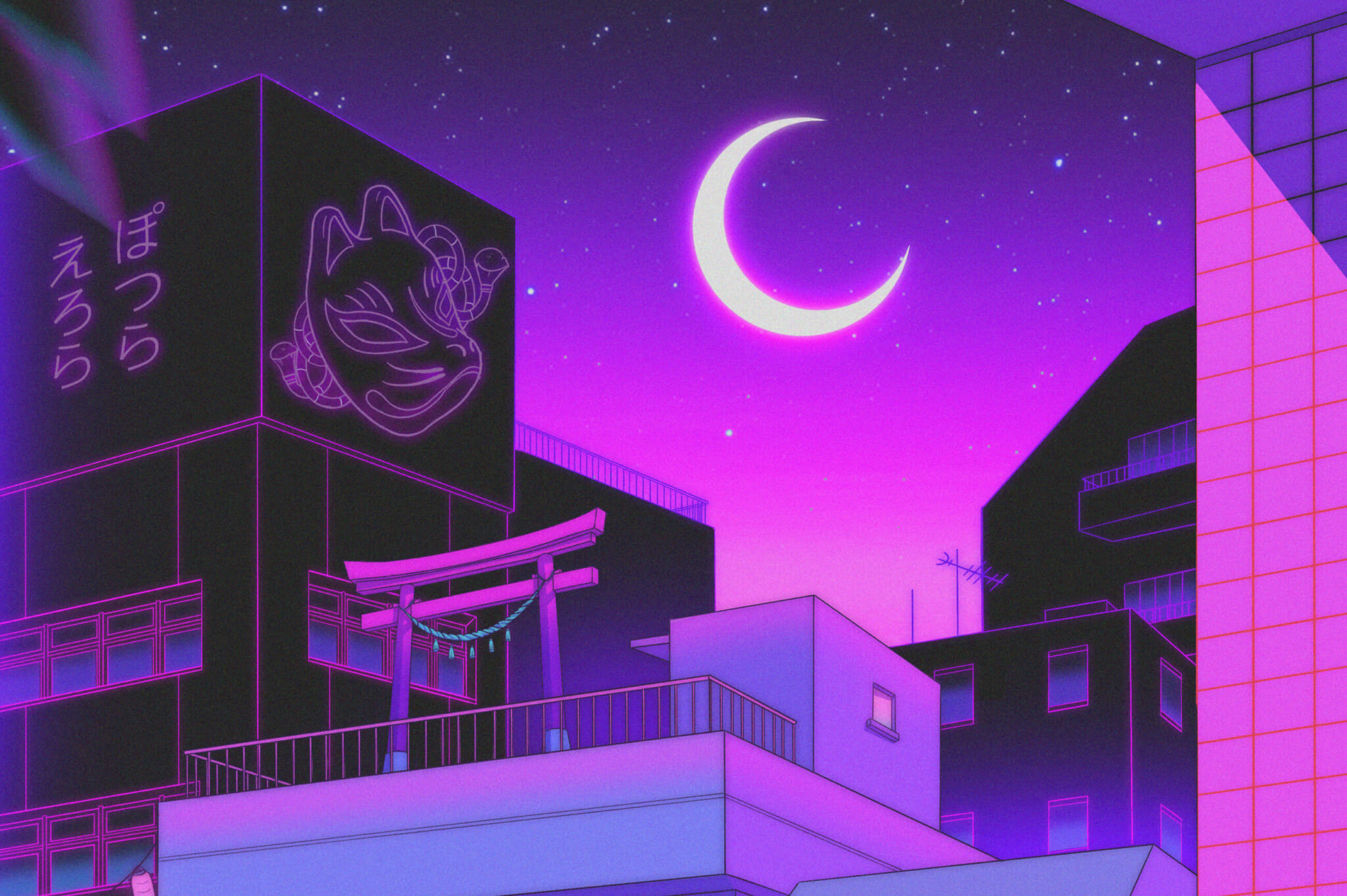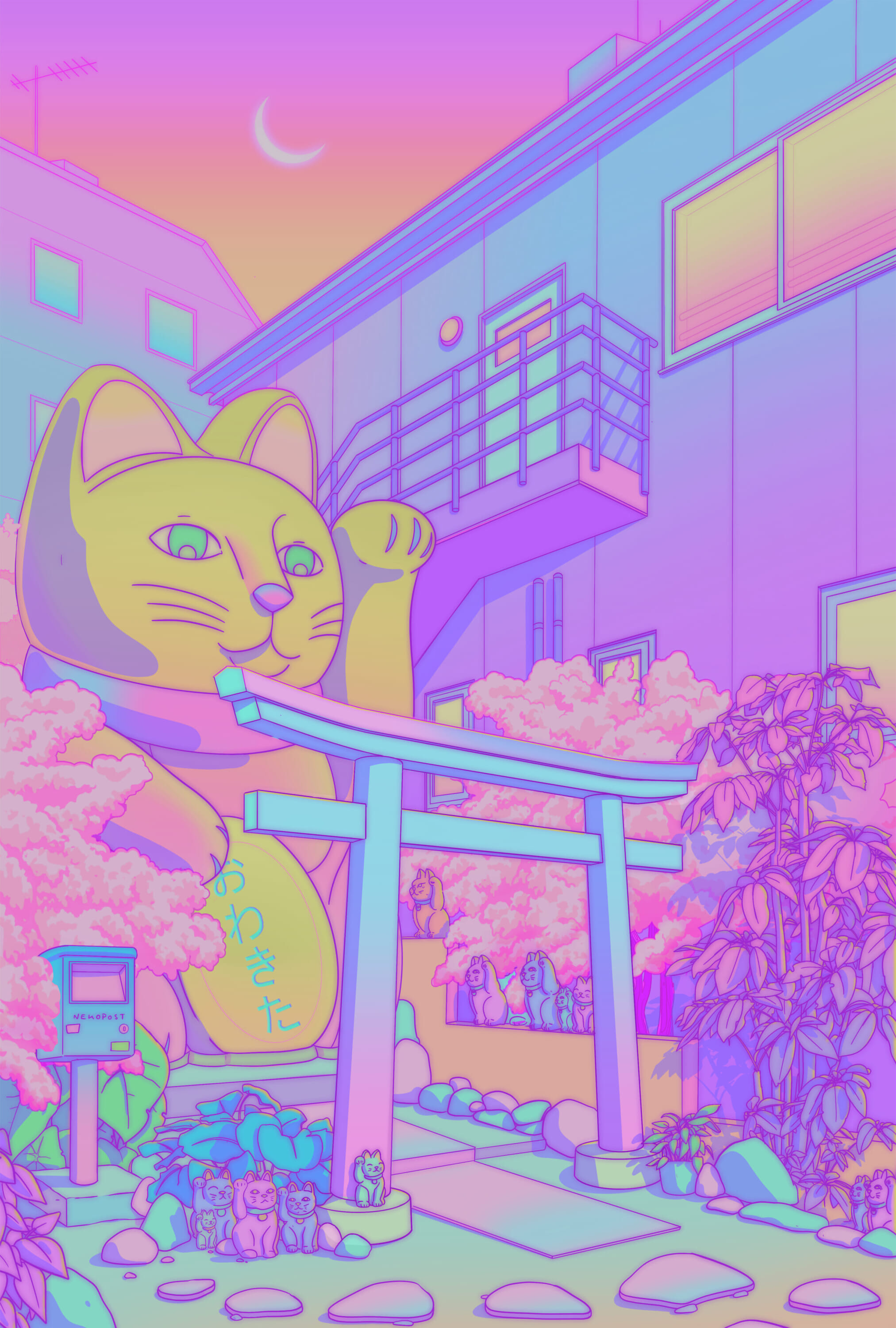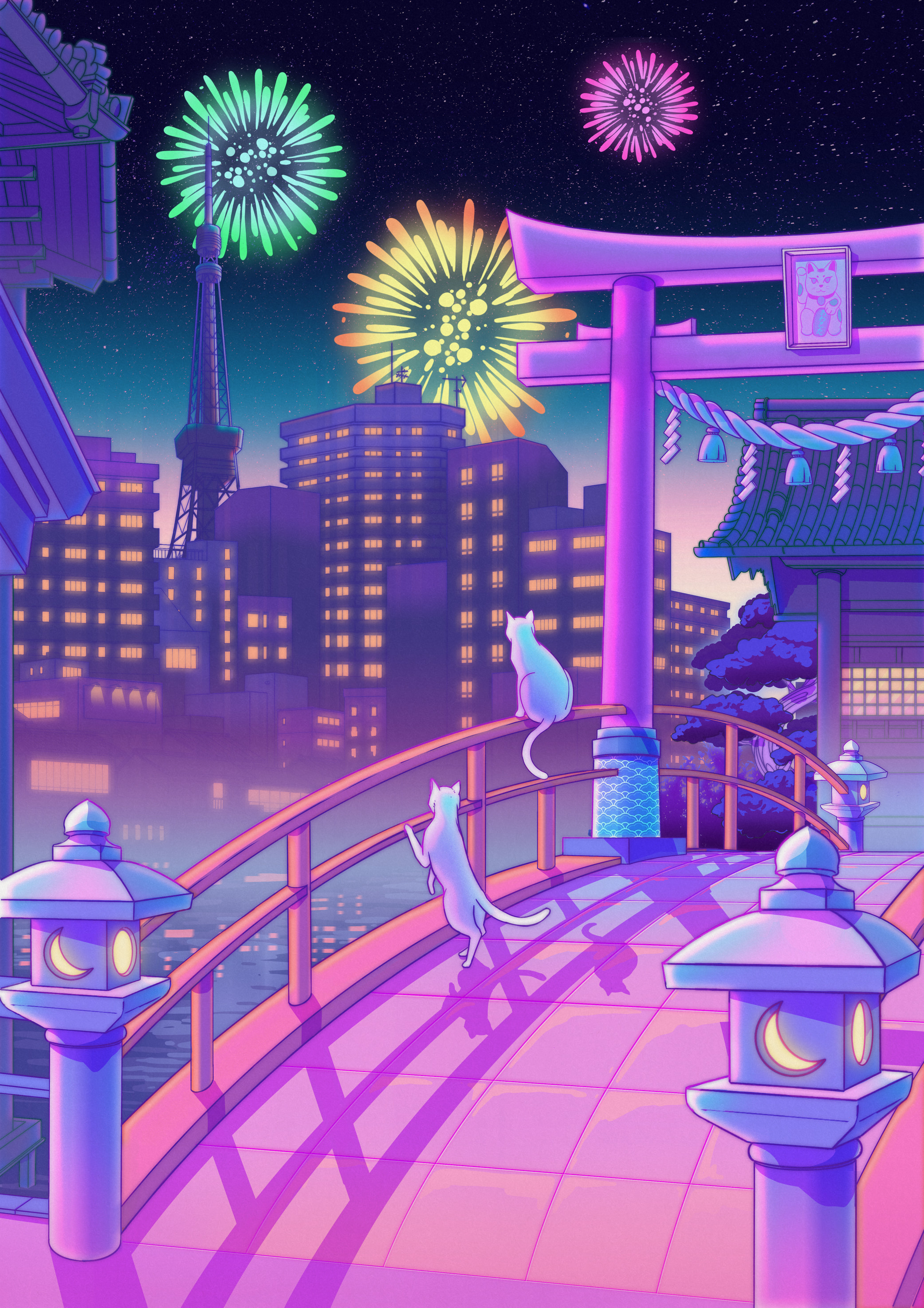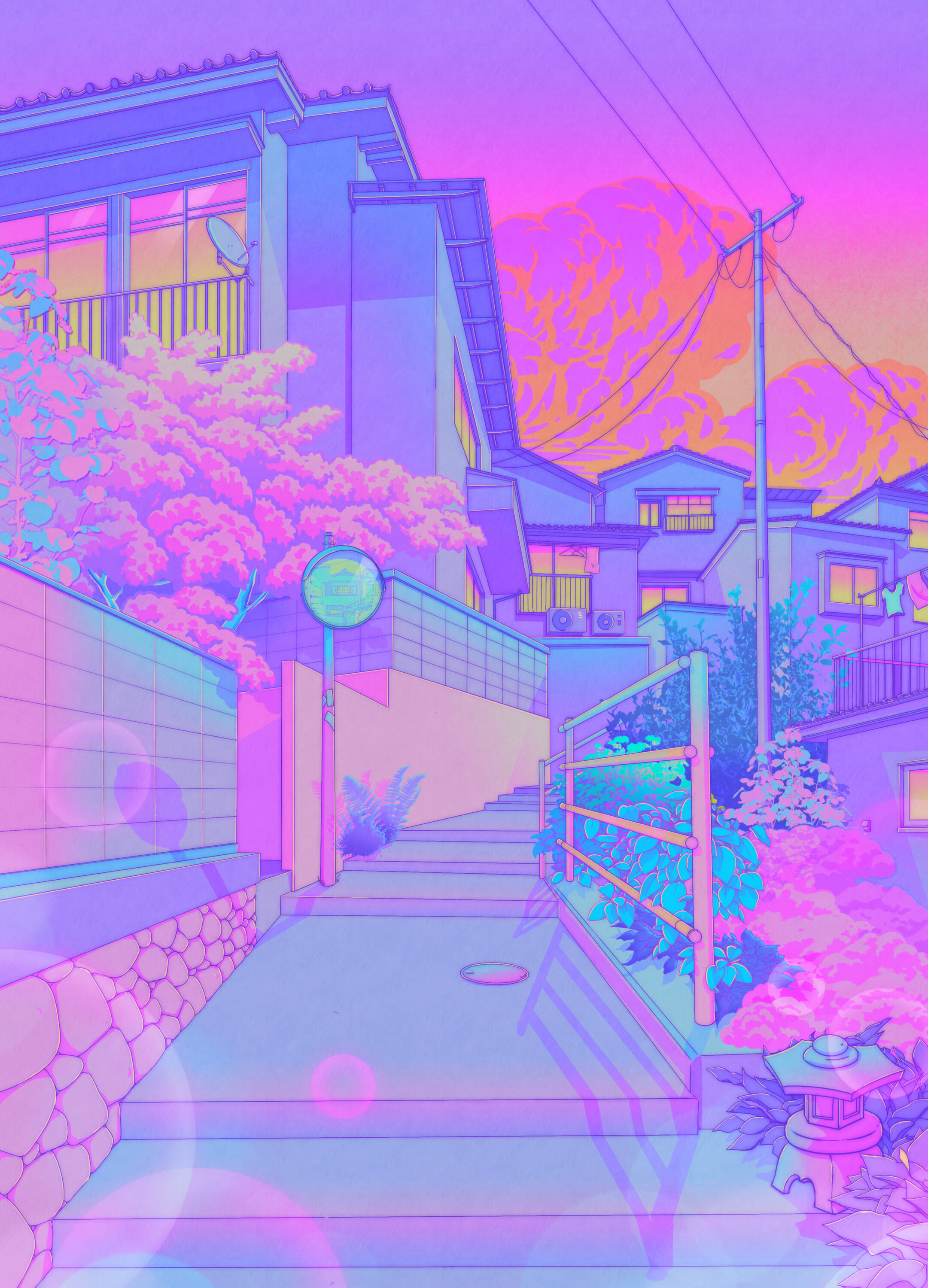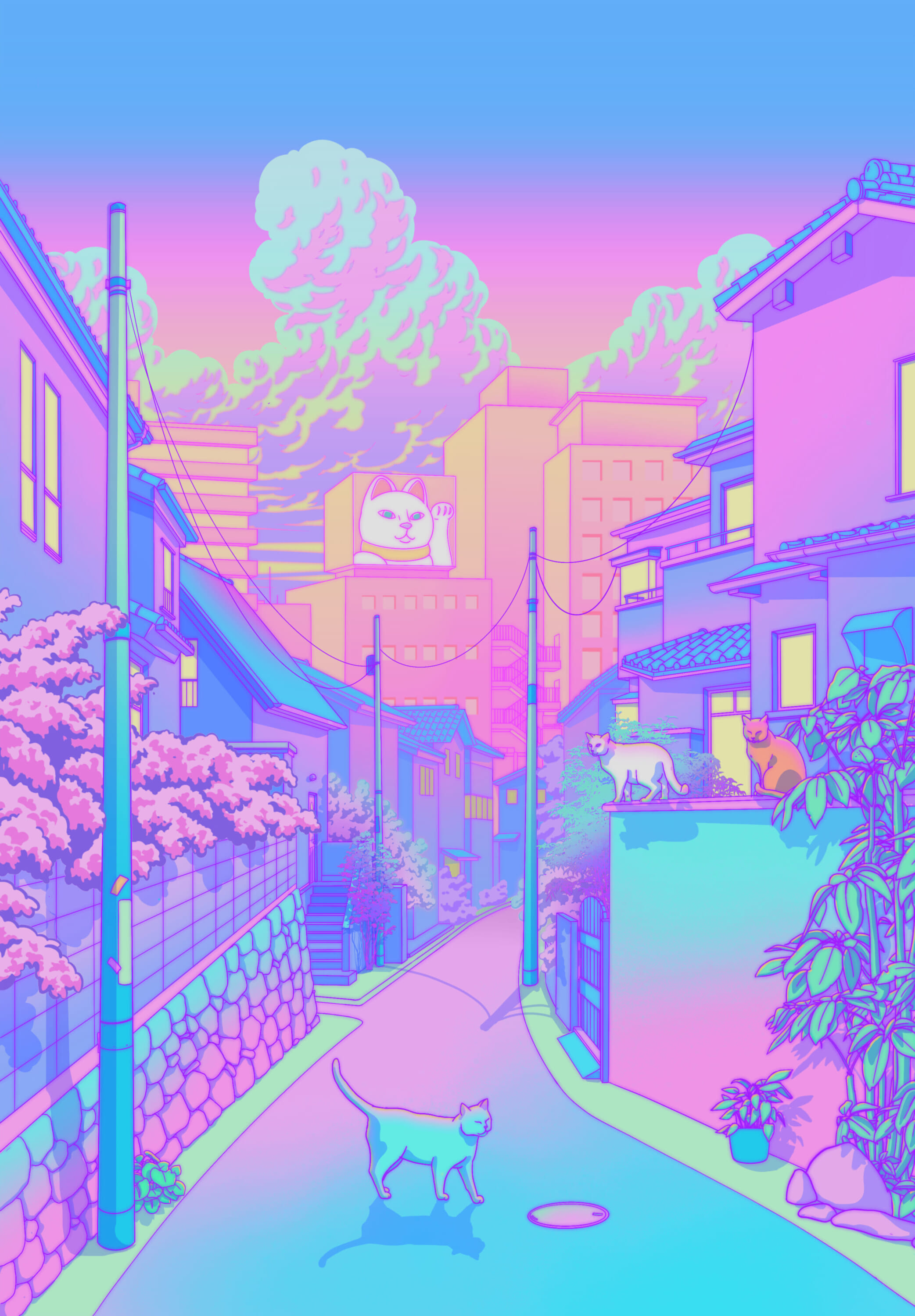Welcome to digital dream worlds built on cotton candy-colored streets where the occasional cat prowls. These are quiet worlds, save for the hum of a vending machine or the wind whispering through a sakura tree in full bloom.
Elora Pautrat, the artist behind these enchanting dreamscapes, says, “I want to depict a side of Tokyo that people don’t usually see. You only see the city that never sleeps; the neon, the crowds. But it can also be a relaxing place.”
Not many would describe Tokyo as calm or quiet. And yet, Pautrat’s art is full of calmness and everyday Tokyo scenes. It’s not the commuters racing through Shibuya’s scramble crossing or the crowds of tourists milling around Senso-ji Temple. Rather, it’s residential backstreets, stairs, small shrines, sleepy squat buildings after midnight — all with not a person in sight.
“There are no people in my art because they bring chaos and take the spotlight,” she explains.
TW caught up with Pautrat — known as Owakita to her over 79,000 followers on Instagram — when she came to wander the backstreets of Tokyo and transpose them into her art world. The artist, whose social media moniker is a patchwork of syllables and bits of nicknames, told us about how and why she became a builder of pastel daydreams.

Photo by Marina González
The Japan Connection
Growing up in the French Alps, the only window to Japan Pautrat had was Studio Ghibli films. Whether it was Mei and Satsuki gallivanting through the countryside or Princess Mononoke in the mystical mossy forests, Pautrat related to many of the Ghibli characters and their connection to nature.
Coming to Japan for the first time in 2016, she discovered that Tokyo was nothing like a Ghibli film, but she still chased that feeling of tranquility and immersion in her surroundings. She also discovered a new sentiment while in Japan.
“It’s like this weird feeling of nostalgia for a place you never lived in before,” she says, describing a sensation that resonates with many. So far, Pautrat has lived in Savoie and Lyon in France, London, England, and now Edinburgh, Scotland. She tells us that no other place has yielded a similar feeling.
“Japan is like a hoarder of times,” Pautrat jokes, mentioning the coexistence of fax machines and robots. Indeed, it often feels like the whole of Japan is existing in a timeless space, full of nostalgia mixed in with the present and future, all at the same time
Japan has left a strong mark on this artist’s expression, but it’s not what first comes to mind. Many people see Sailor Moon in her artwork, but Pautrat never watched the anime in her childhood, so it’s not a direct influence. The reason she loves putting cats in her art is because cats are masters of relaxation. “Their purring has also been found to be healing, and this resonates with my art,” she says.
Pautrat cites ukiyo-e woodblock prints as having a much bigger influence. The prints “depict these beautiful colors and calm landscapes. I love that feeling of just sitting and watching the landscape,” she says. She was also inspired by the drawing style in the Mononoke animated film, which is based on ukiyo-e and old tales.
The endless inspiration has drawn Pautrat back to Japan time and time again. She visits often and stays for months. She has made friends in Tokyo who keep her in the loop and even helped her participate in a group exhibition at the Artedly event when Japan’s borders were closed.
Art Therapy
Pautrat considers her art part of the lo-fi online aesthetic. There’s an overlap in colors with vaporwave, too, but while that internet movement is all about intentional chaos, lo-fi is about calm and relaxation. Soothing lo-fi music livestreams on Youtube are some of the most watched videos on the platform, and the channels have tens of millions of subscribers.
This search for tranquility has been on the rise in many art forms, including the iyashikei style of anime where characters are shown living peaceful lives. The real world is plagued by death, doom and catastrophe, so who can blame people for wanting escapism?
Pautrat’s need to escape stress and anxiety is how her now recognizable style originated. “Art school was distressing at times,” she admits. “Having to be constantly creative, and also judged harshly.”
She happened to learn about color therapy at the time and the calming effect on the mind that some colors have, especially blue and purple. She started applying this in her art, at first only keeping the drawings to herself. Art school teachers were already discouraging her fantasy art, much to her chagrin. “For me, art is supposed to be something very free,” Pautrat says.
Some people have dismissed her art as too anime-like, too girly or too pink. But she’s also received messages from men who say that they love her work — though they’re too embarrassed to display it on their walls. Many others have told her that looking at her illustrations calmed them down after a stressful day. “It felt great to be able to do that with my art,” Pautrat says, adding that she wants people to “stop and look at art, especially in an age of short attention spans.”
Surfing the Pastel Waves
Pautrat’s pastel daydreams unfurled slowly against the backdrop of an artist trying to find her way in the world. After art school, she pivoted to game design, where she felt she could express herself more freely. “You can put 10 planets in the sky. No one’s going to tell you no, that it’s not possible,” she says.
She graduated as a 3D environment artist and started working in the video game industry, with her company at one point collaborating with Sega, the Japanese game giant.
Throughout this time, her pastel lo-fi art was there for her as therapy, a creative exercise and pure enjoyment. And despite having no established network or major social media presence, she decided to take a leap of faith and went freelance full time in 2019.
Pautrat didn’t expect her art account to explode the way it did. But with great social media clout comes great pressure. “Social media pushing me to create and publish every day was stressing me out,” she says. “This was supposed to be my therapy, not a source of stress.”
The demand to constantly produce new content drives many online creators to burnout while trapping them inside the platform that is their livelihood. Luckily, as the opportunities increased, Pautrat was able to feel more secure and ignore the algorithm, focusing only on the positives of social media.
“Some of my best friends today I’ve met on social media. And some of the biggest opportunities, too, have come from there,” she says, referring mainly to her Uniqlo Paris work. Launched on February 20, the collaboration was extended due to its immense popularity, and visitors to Uniqlo’s Paris flagship store can print Pautrat’s designs on T-shirts, tote bags and more through the UTme machine.
Even with all her success, however, Pautrat still gushes over the little joys in life and the connections with people. Her eyes grow soft when she recalls meeting an elderly woman who follows her on Instagram at Uniqlo Paris. Moments like this drive her enthusiasm to continue creating calm corners on the internet for people all over the world.

